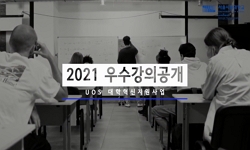Smart cities are gaining more attention as they are being considered a means to solve various urban problems caused by the concentration of population and to improve the quality of life of urban residents. Among the smart city elements, smart mobility...
http://chineseinput.net/에서 pinyin(병음)방식으로 중국어를 변환할 수 있습니다.
변환된 중국어를 복사하여 사용하시면 됩니다.
- 中文 을 입력하시려면 zhongwen을 입력하시고 space를누르시면됩니다.
- 北京 을 입력하시려면 beijing을 입력하시고 space를 누르시면 됩니다.
https://www.riss.kr/link?id=A108972903
- 저자
- 발행기관
- 학술지명
- 권호사항
-
발행연도
2021
-
작성언어
Korean
-
주제어
스마트 모빌리티 ; 도입 수준 ; 자율주행 ; 도심항공모빌리티 ; 통합교통서비스 ; 서울 ; Smart Mobility ; Autonomous Vehicle ; Urban Air Mobility ; Mobility as a Service ; Seoul
-
자료형태
학술저널
-
수록면
43-55(13쪽)
- 제공처
-
0
상세조회 -
0
다운로드
부가정보
다국어 초록 (Multilingual Abstract)
Smart cities are gaining more attention as they are being considered a means to solve various urban problems caused by the concentration of population and to improve the quality of life of urban residents. Among the smart city elements, smart mobility that has recently been developed and provided various mobility services is within the core area of smart city and people are expressing their interest in its active implementation in cities. Under this background, this study establishes 11 elements of smart mobility through literature review and evaluates their level of introduction in Seoul by conducting a survey targeting 20 experts in the transportation sector. To this end, four indicators (urban environment, vehicle and infrastructure technology, operation technology, and legal system) are proposed for evaluating the elements of smart mobility, and comparative evaluations are conducted for Seoul and overseas cities. The evaluation results indicated that the element of smart public transportation was rated the highest, while urban air mobility had the lowest score. Regarding the indicator-by-indicator comparisons, it was identified that the legal system field for smart mobility implementation was significantly low. The levels of overseas cities and Seoul were found to be very similar, indicating that the group of experts recognized that Seoul is not falling significantly behind in the race of smart mobility compared to overseas cities. In this study, we attempt to define the elements of smart mobility and quantify the levels of their introduction in Seoul. This effort would be meaningful in that it provides opportunities to explore future policy directions by objectively diagnosing the current level of smart mobility.
동일학술지(권/호) 다른 논문
-
- 한국모빌리티학회
- 이준석
- 2021
-
모빌리티 법적 규제 문제의 단계적 해소 방안에 관한 연구
- 한국모빌리티학회
- 오병철
- 2021
-
스마트시티를 위한 모빌리티 서비스 제공 사례 및 미래 서비스 진화를 위한 정책 방향
- 한국모빌리티학회
- 정구민
- 2021
-
- 한국모빌리티학회
- 김재겸
- 2021




 KCI
KCI






